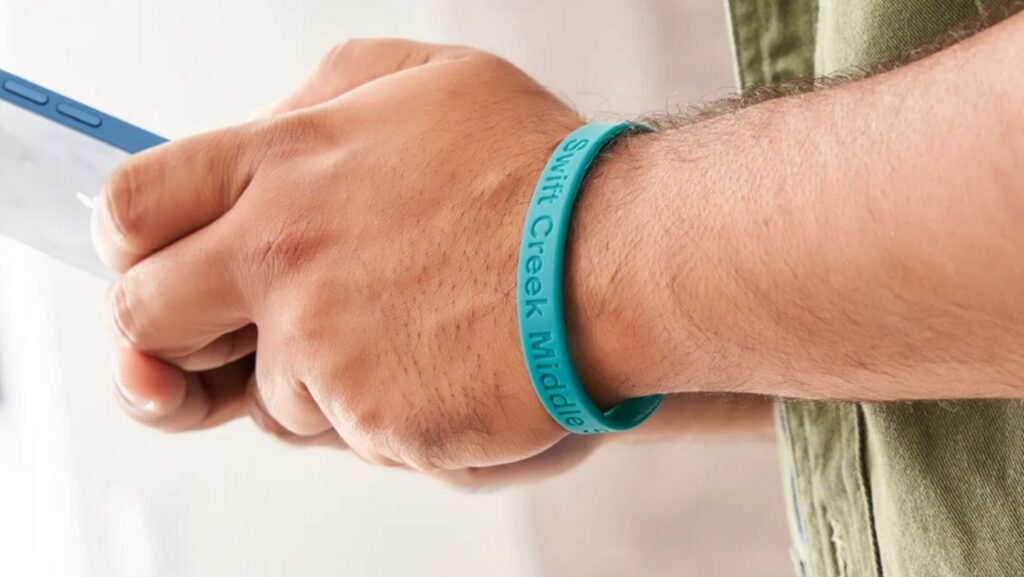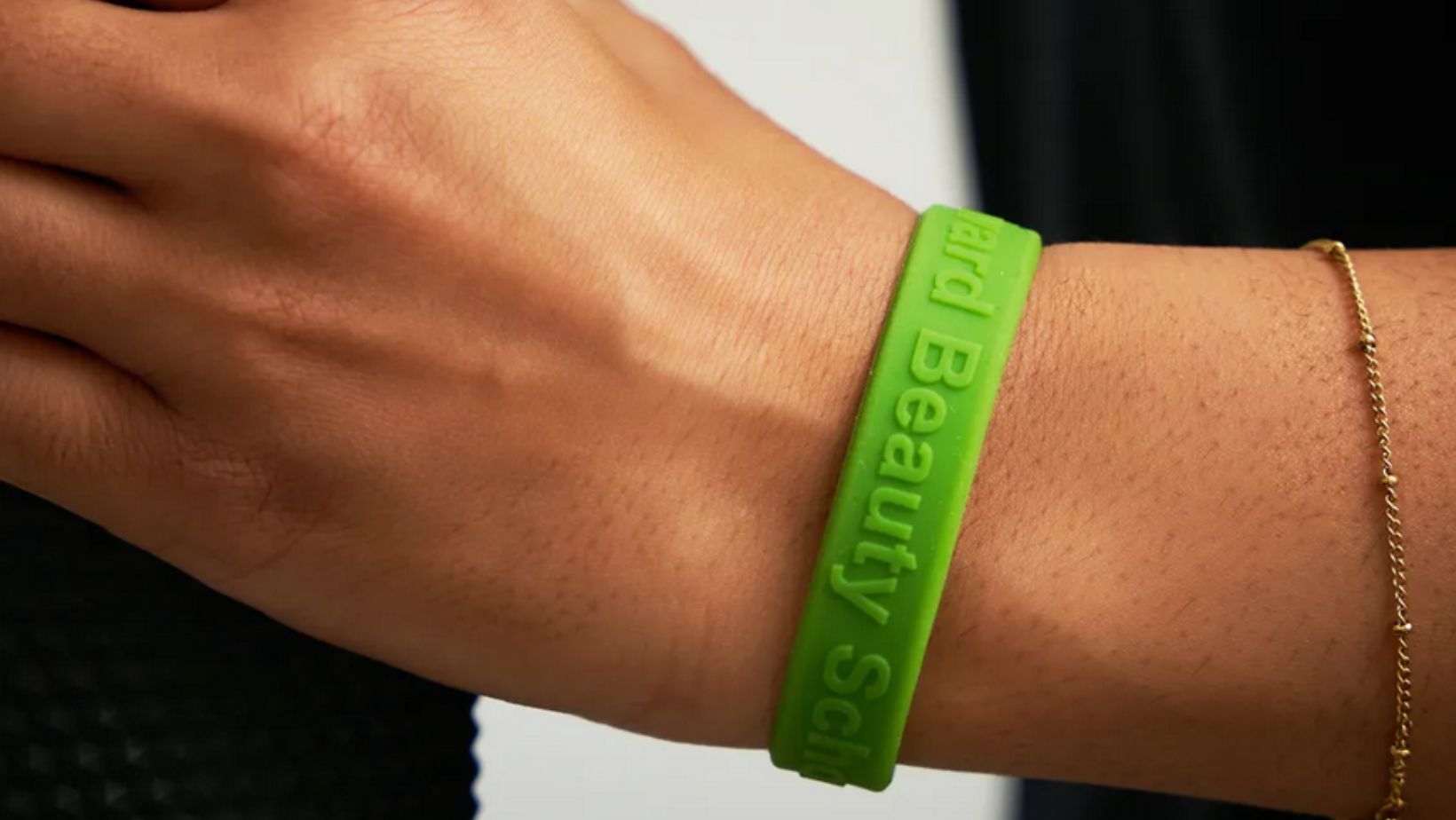
Lost badges, unauthorized access, and constant replacement orders are common challenges in property management. Identification (ID) tools should simplify daily operations, not complicate them. Many site managers still rely on flimsy plastic name tags, while others are exploring more modern solutions like color-coded wristbands.
Which option truly delivers the best combination of durability, visibility, and security? Below, we compare custom silicone wristbands against traditional name tags. This will help you decide what belongs on your staff’s wrists or lapels this budget cycle.
Why On-Site ID Still Creates Headaches
Property teams include a wide range of roles, from leasing agents and concierge staff to maintenance technicians and security contractors. Each position must be instantly recognizable to residents and vendors. Their ID needs to be comfortable and safe during physical tasks, like climbing ladders or fixing HVAC systems.
IDs also must be compatible with modern access-control technology and comply with visibility guidelines. When one component fails, such as a pin-on badge falling off during a repair, the result can range from resident mistrust to a serious security incident.
What Exactly Are Custom Silicone Wristbands?
Imagine the classic charity wristband, but designed specifically for your property team. Made from 100% medical-grade silicone, these bands can be debossed, embossed, or screen-printed with logos and text. Silicone wristbands can be embedded with RFID or NFC chips for secure door and elevator access.
They are often color-matched to brand guidelines and cost depending on features. For examples of design templates and technology options, catalogs for products like Swagprint.com’s premium custom silicone wristbands showcase the full range of possibilities.
Five Key Advantages of Wristbands for Property Pros
Durability & Weather Resistance
According to research, silicone wristbands are waterproof, sweat-proof, and able to withstand extreme temperatures. This makes them far more rugged than a plastic badge. One facilities-management survey found that wristbands outlasted plastic name tags by an average of 20 months in outdoor maintenance roles.
Built-In Comfort
Unlike traditional badges, there are no sharp pins or magnets that can rub against skin or snag on uniforms. Research confirms that silicone wristbands are hypoallergenic and stay comfortably in place during physical tasks, ensuring safety and convenience for active staff.
Access-Control Ready
RFID or NFC chips can be molded directly into the band, eliminating the need for separate key fobs or access cards. This integration provides a seamless security solution. Color-coding also adds a second layer of visual clearance, such as “blue for leasing” or “green for maintenance.”
Branding & Resident Trust
A full 360-degree canvas means your logo and property colors remain visible from any angle. This constant visibility instantly signals legitimate staff to residents and visitors, which enhances trust and security on the premises.
Long-Term Cost Efficiency
While a wristband’s initial unit price might be similar to a high-end magnetic badge, its multi-year lifespan significantly reduces reorder frequency.
| Key Insight: The true value of silicone wristbands isn’t just their low unit price, but their multi-year lifespan. This durability drastically cuts long-term replacement costs and operational headaches for active maintenance and security teams. |
Wristband Variations That Differentiate Roles

The versatility of silicone wristbands allows for easy role differentiation at a glance. You can use solid colors for permanent staff and swirl patterns for contractors.
Dual-layer bands, which feature an engraved text that exposes a contrasting interior color, are useful for distinguishing “Maintenance” from “Security” instantly. Offering multiple sizes also accommodates diverse teams and seasonal needs, like layering over gloves.
Traditional Name Tags
Plastic or metal tags-whether pin-back, magnetic, or designed for a lanyard-have been the default ID method for decades. They are familiar to residents and easy to procure from local vendors or print in-house.
Pros and Cons for Property Teams
Traditional name tags offer the lowest upfront price point and are instantly recognizable. They can include a photo for enhanced security, which is a key advantage for front-of-house staff. Additionally, there are no sizing issues, as one tag fits all jackets, shirts, and uniforms.
Where They Fall Short
The drawbacks are significant for active roles. Pins and magnets can damage uniforms or pose a safety risk near electrical panels. They are easily lost or swapped. Their integration with modern access control is limited, and they are not weatherproof.
| Warning/Important: Beyond simple replacement costs, each lost name tag represents a potential security breach. Easily lost or swapped badges can grant unauthorized individuals apparent legitimacy on your property, creating significant risk for residents. |
Implementation Tips for Property Managers
Rolling Out Wristbands
To ensure a smooth transition to wristbands, consider these steps:
- Assign unique colors by role or building (e.g., blue for leasing, red for fire-watch contractors).
- Encode RFID chips to match existing controller IDs to avoid major re-keying.
- Document a replacement protocol: worn or broken bands are exchanged, and old chips are deactivated in the access software.
Optimizing Traditional Name Tags
If you continue using name tags, these tips can improve their effectiveness:
- Use magnetic backs for business attire and pin-backs for hard-hat areas where magnets can pose a risk.
- Integrate high-resolution photos and job titles to prevent “badge borrowing.”
- Pair with color-coded lanyards for visitor passes during renovation projects.
Hybrid Strategy Matrix
A blended approach often works best to meet diverse needs:
- Front-of-house: Photo name tag for personal interaction.
- Back-of-house & maintenance: RFID wristband for durability and access.
- Temporary vendors: Day-pass lanyard badge for easy tracking.
| Pro Tip: Don’t force a single ID solution. A hybrid approach is often best: use durable RFID wristbands for active back-of-house teams and traditional photo name tags for front-desk staff to maximize both security and resident rapport. |
Quick Recommendation Matrix
For most properties, silicone wristbands excel at durability, tech integration, and role visibility. This makes them ideal for maintenance, security, and large outdoor communities. Traditional photo name tags remain useful for front-office teams where face-to-face identification matters most.
A hybrid model often delivers the best of both worlds, especially in multi-building or mixed-use sites. With the right mix of technology and clear role differentiation, you can safeguard residents, empower employees, and reduce operational costs.












